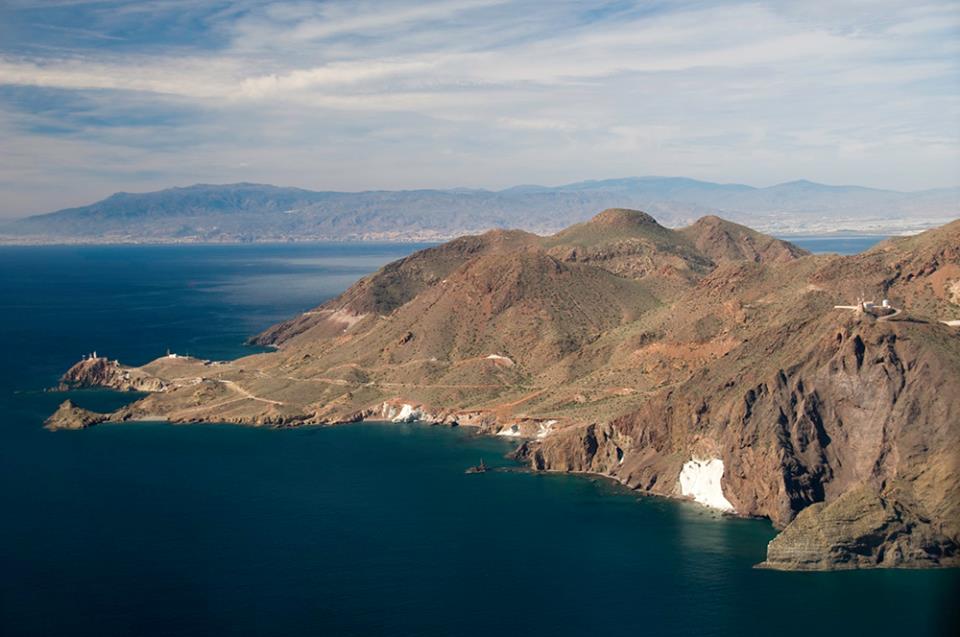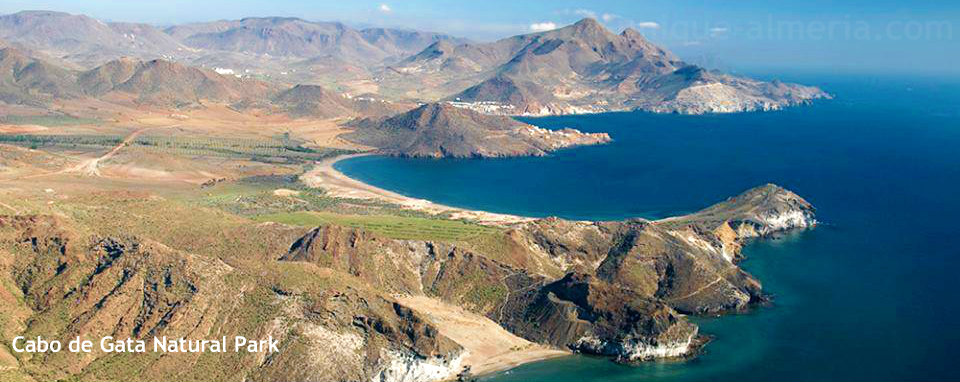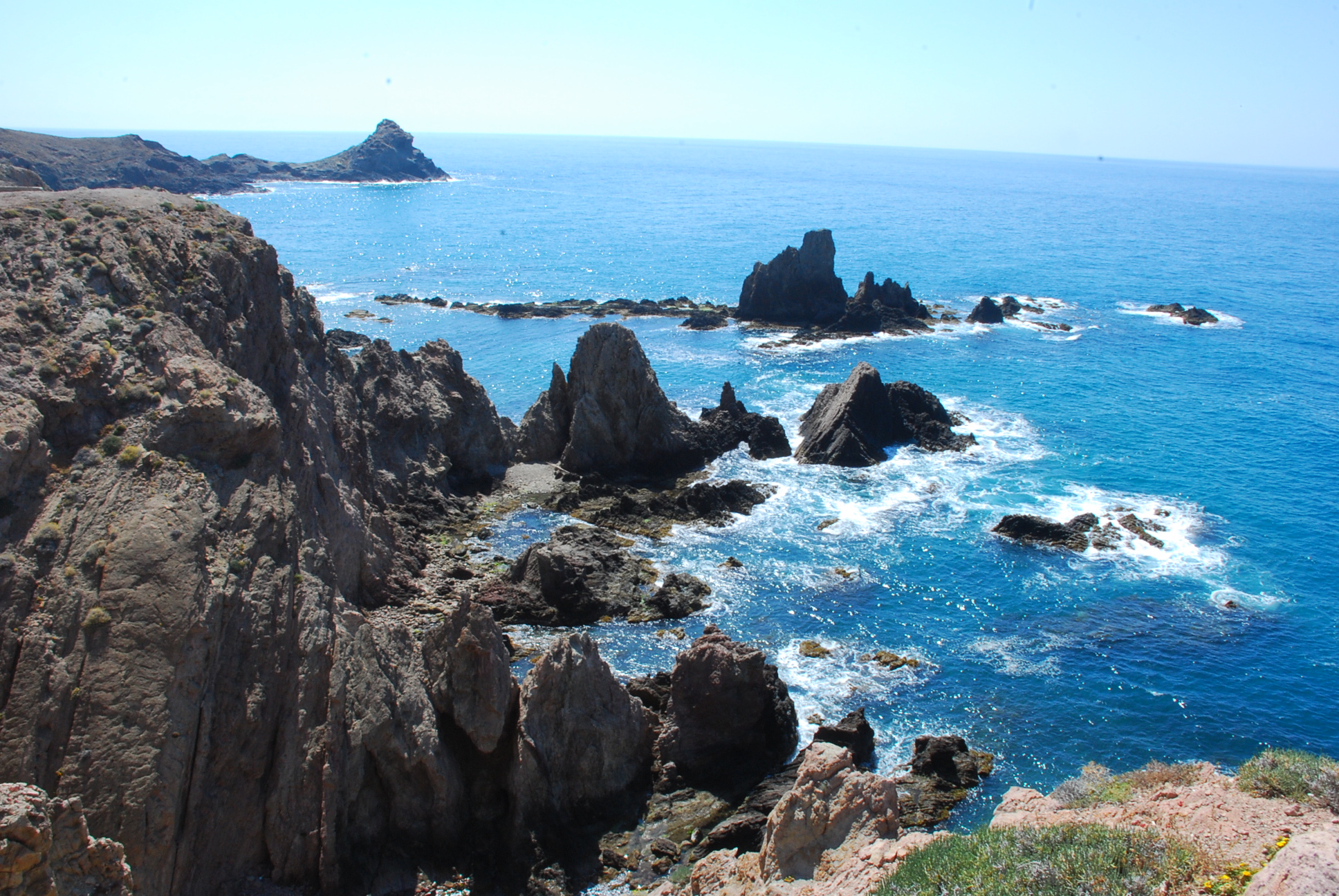Cabo de Gata-NÃjar Natural Park
Cabo De Gata is a province of Almería situated in the southeast of Spain about 33 663 hectares of land that is designated as a nature park. The Parque Natural de Cabo de Gata begins immediately after the Retortenort ( urbanization ) Retamar ( a few miles west of the airport Almería), runs across the Cabo de Gata and ends just outside the port of Carboneras.
Since the vegetation is unique due to the European standards very hot and dry climate (2900 hours of sunshine per year), the area has the status of a biosphere reserve.
With precipitation of on average only 130-180 mm, which also still have to pay only 25 days of rain per year, very well-adapted plant species can survive. The semi-desert flora of Cabo de Gata is strongly reminiscent of the plant societies of the Saharan border zone. Among the most characteristic plants include the only (besides the Cretan Date Palm ) native to Europe palm, the fan palm ( Chamaerops humilis ), which scarcely reached half a meter in height.
The coastline of the Cabo de Gata is broken and is in the hinterland of mountains limited ( Sierra del Cabo de Gata, Sierra de la Higuera ). The geological origin lies in a strong volcanic activity in the Tertiary, when the Betic Cordillera auffaltete. However, all volcanoes are extinct already for millions of years, while the region continues to be affected by earthquakes. Due to the volcanic activity are numerous minerals such as Chalcopyrite, alkali feldspar, gold, jasper and agate, come to the surface. The highest point of the area is the Pico de los Frailes, 493 m, also an extinct volcano. The Sierra del Cabo de Gata is by dry valleys ( Ramblas ) and deep valleys ( ravines ). On the beaches between the village of San José and the two eponymous cape you can see very well the lava flowed into the sea. In the Nature Park, the Playa de find beautiful sandy beaches that can often be reached only on foot, for example los Muertos at the northern end of the reserve.
In the western part of the nature park on the Gulf of Almeria, the Romans had already " salt factories" created, of which the remains are still visible today.
Today's salt pans lie further south and offer a rich variety of birdlife ideal conditions.
Until the 70s of the 20th century, this region was one of the poorest of Spain. Collecting and processing the extremely fibrous, flexible and tear-resistant Espartogräser was an important source of income for villages. Two grass species can be distinguished: the esparto ( Lygeum spartum ) and the Halfagras ( Stipa tenacissima ).
Esparto
Halfagras
Today the grass products are made only for tourists.
In the plane of fruits and vegetables is operated strengthened. The settlement of traditional agricultural enterprises, especially those with an ecological orientation is desired, although large areas are directly on the edge of the natural park covered with tomato plantations, the so-called Mar Plastico, sometimes in defiance of the limits of the natural park.
Cabo de Gata is located close to the desert of Tabernas and was used as a secondary location for several films, including, inter alia at ( T) Spaceship Surprise and the ruins of the " Planta Denver " gold mine and hut at Rodalquilar in one of the Indiana Jones movies as well as some desert shots for Lawrence of Arabia.
Use in art
- Published in 2007, the German electro band Nova -Spes on their album " The Opposite Lane " the instrumental " Cabo de Gata ", which describes a journey through the natural park.
- 2013 published the German author Eugen Ruge his novel Cabo de Gata; Random House, Reinbek, ISBN 978-3-498-05795-4.
Swell
- Roberto Cabo: terra- Nature Guides Spain. Main destination 30 Cabo de Gata p 217
- Mapa Guía : Cabo de Gata Nijar.










